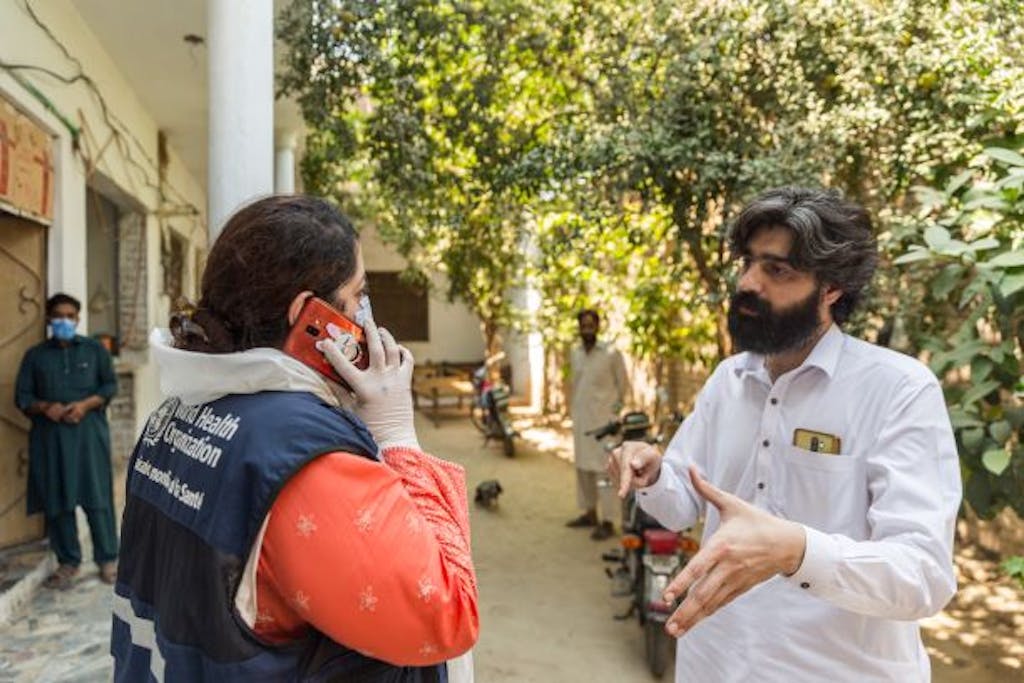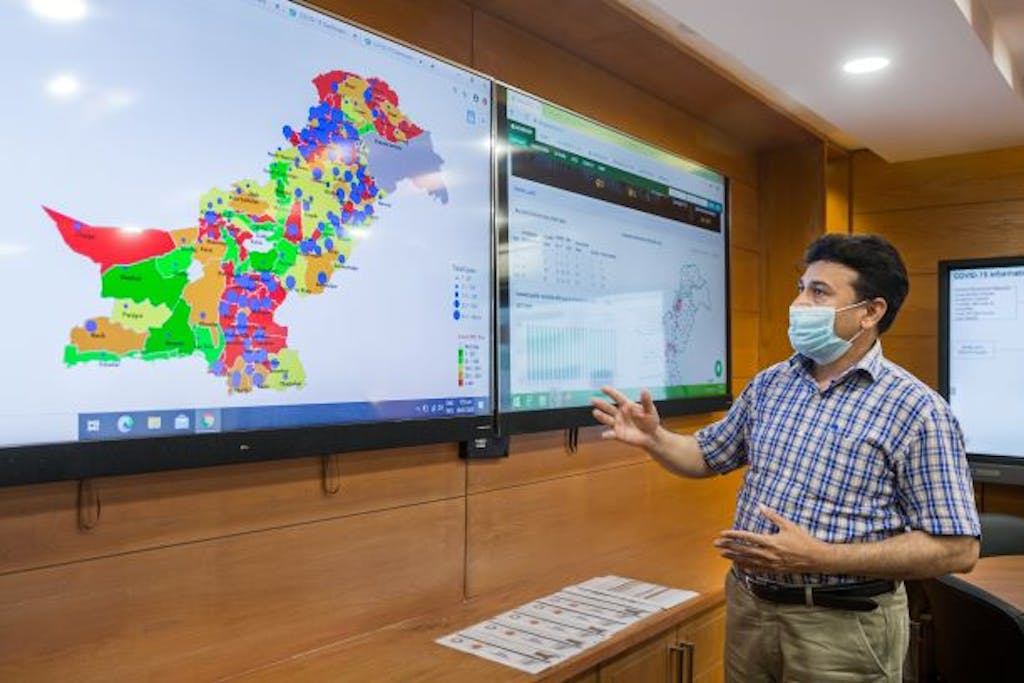The story of COVID-19 is one of trial and error. Reopening borders, tourism, and public spaces is challenging in timing and logistics, sometimes causing increases in virus transmission and a possible reinstatement of lockdowns in cities and areas. This is all too evident in places like the US, Australia, Spain, and the UK.
“We are at a critical point,” says Dr Stéphane Hugonnet, Medical Doctor and Epidemiologist, Unit Head, WHO Health Emergency Programme. “Contact tracing is crucial in order to rapidly identify cases and their contacts and prevent resurgence.” As lockdown measures begin to reduce COVID-19 cases to manageable levels, says Dr Hugonnet, the epidemiological practice of contact tracing must go into full force.

So what is contact tracing?
Seemingly simple, contact tracing is the process of identifying all people that a COVID-19 patient has come in contact with in the last two weeks. In reality, the lift can be monumental.
“You need a system to identify cases, a functioning laboratory, a system to feedback data, people to identify and follow-up with contacts, provide support if they need quarantine, and treat them properly,” says Dr Hugonnet. This amounts — at a minimum — to three days of work per COVID-19 patient. And that’s not even considering test delays, new branches of virus transmission, and travel difficulties in rural or conflict settings.
Contact tracing becomes complicated and time-consuming very quickly. Especially in the context of COVID-19, as the virus can be transmitted between people without even manifesting symptoms.
“It all adds up,” says Dr Hugonnet.
To cut down on the man-power needed to manage these processes, a wide array of digital tools are surfacing around the world. An option used currently in 55 projects worldwide is called Go.Data. Developed by WHO during the West African Ebola epidemic in 2014, Go.Data is a tool for public health practitioners and field responders that facilitates labour intensive processes of contact tracing such as initial case investigation, transmission pathway visualization, and contact follow-up.
Developers are also turning their eyes to the public, putting epidemiological tools in the hands of ordinary citizens and businesses. The details vary from tool to tool. Some, like SaferMe, simply provide employers with a database of regularly updated contact tracing from employees and a place to input daily health surveys.
Others have more complicated implications, for example the “Exposure Notification” from Apple and Google. These “proximity tracking tools” are downloadable phone apps that use Bluetooth to alert users when they’ve come into contact with a COVID-19 positive person, advising them on next steps. However, there are some roadblocks to ubiquitous public adoption. First and foremost: data security and privacy.
Data security and privacy
The effectiveness of digital proximity tracking tools depends on a high coverage and utilization rate among the population. Trust is a central issue, with laws on privacy and data security varying drastically throughout the world. “We must ensure that key elements of privacy are not abused or disregarded in the name of public health response for emergencies,” says Bernardo Mariano Junior, Director of the Department of Digital Health and Innovation and Chief Information Officer of WHO. “The key is finding frameworks where data privacy and data sharing can coexist in ways that add to public health responses.”

Mr Mariano also emphasises that digital tools cannot be used in a vacuum, a sentiment echoed by Dr Hugonnet. “Digital tools have the potential to optimize traditional contact tracing processes, but only if they are integrated into a comprehensive public health response,” says Dr Hugonnet. “The application cannot function or be effective on its own.”
When it comes down to it, contact tracing during the COVID-19 pandemic relies on the ubiquitous implementation of traditional epidemiological approaches, involving public health responders who investigate cases in person, set out to talk to those potentially exposed, and advise them on what to do next. However, in the context of widespread community transmission this may not be enough, and new technologies might be required to scale up these processes. Even so, according to the International Telecommunications Union, at the beginning of 2020, 46.4% of the world population had no access to internet. As digital solutions to contact tracing are explored, it’s key to remember they will only benefit a privileged subset of the world. Even with broadband internet access — needed to download proximity tracking apps — users would also need smart phone technology, which creates another roadblock to the widespread use of these digital tools.
While the world searches for breakthroughs in health technology, WHO is running multiple tracks at once: behind the scenes bringing together private sector, innovators and governments to scale up technology and digital inclusion, and on the ground in humanitarian settings like Syria, Yemen and Bangladesh to set up early warning systems for COVID-19 transmission and provide much needed support.
There is still so much to learn about contact tracing in the age of COVID-19. WHO ensures what we know already is put to work.
“This is not a sprint,” says Mr Mariano. “It is a marathon.”
Featured Photo: WHO / Blink Media – Saiyna Bashir



 View All Blog Posts
View All Blog Posts


